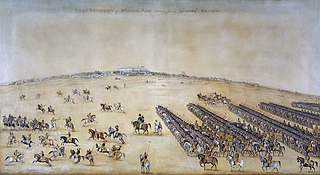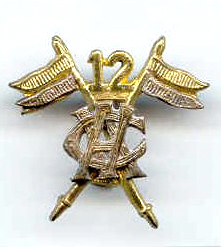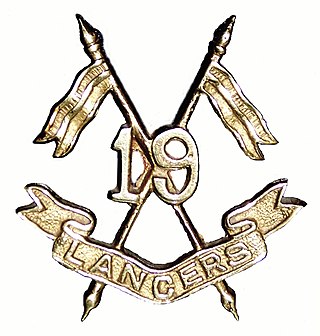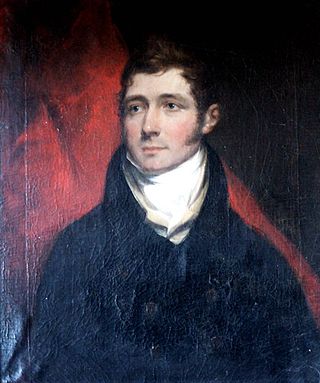Related Research Articles
Risaldar, meaning the commander of a risala or risalah in Persian, is a mid-level rank in cavalry and armoured units of the Indian and Pakistan Army. In other arms, such as the infantry, the equivalent rank is subedar.
Subedar is a military rank in the militaries of South Asia roughly equivalent to that of a warrant officer. Historically classes in the British Indian Army as a Viceroy's commissioned officer, the rank was retained in the Indian Army and Pakistan Army after independence. The rank of subedar is classed as a junior commissioned officer rank in India and Pakistan.
A viceroy's commissioned officer (VCO) was a senior Indian member of the British Indian Army. VCOs were senior in rank to warrant officers in the British Army, and held a commission issued by the viceroy. Also known as "Indian officers" or "native officers", they had authority only over Indian troops and were subordinate to all British King's commissioned officers, Indian Commissioned Officers (ICO) and King's commissioned Indian officers (KCIO).
Subedar-major is the senior-most rank of junior commissioned officer in the Indian and Pakistani Armies, formerly known as the Viceroy's commissioned officer in the British Indian Army.
Risaldar-major was originally a cavalry officer rank of the British Indian Army. During the British Raj, it was the highest rank natives could achieve.

The Poona Horse is an armoured regiment in the Armoured Corps of the Indian Army. The regiment, known before independence as The Poona Horse, was raised as a regular cavalry regiment in the Bombay Presidency army of the East India Company. It was formed from the 3rd Regiment of Bombay Light Cavalry, raised in 1820, and the Poona Auxiliary Horse, raised about 1817–18. The latter unit was absorbed into the regular forces about 1860 and the two regiments later became the 33rd Queen Victoria's Own Light Cavalry and the 34th Prince Albert Victor's Own Poona Horse.

The Order of British India was an order of merit established in 1837 by the East India Company for "long, faithful and honourable service". The company's powers were removed after the Indian Mutiny, and the Order was incorporated into the British Honours System in 1859. The order became obsolete in 1947, after the partition of British India into the Dominion of India and the Dominion of Pakistan.

4th Horse (Hodson's Horse) is a part of the Armoured Corps of the Indian Army, which had its beginnings as an irregular cavalry regiment during the time of the Indian Rebellion of 1857.

The 1st Horse (Skinner's Horse) is a regiment of the Armoured Corps of the Indian Army. It traces its origins as a cavalry regiment from the times of the East India Company, followed by its service in the British Indian Army and finally, after independence as the fourth oldest and one of the senior cavalry regiments of the Armoured Corps of the Indian Army.

The 2nd Lancers (Gardner's Horse) is one of the oldest and a highly decorated armoured regiment of the Indian Army. The regiment was formed by the amalgamation of two of the oldest regiments of the Bengal Army – the 2nd Royal Lancers (Gardner's Horse) and the 4th Cavalry.

The Indian Medical Service (IMS) was a military medical service in British India, which also had some civilian functions. It served during the two World Wars, and remained in existence until the independence of India in 1947. Many of its officers, who were both British and Indian, served in civilian hospitals.

The Bengal Army was the army of the Bengal Presidency, one of the three presidencies of British India within the British Empire.

The Deccan Horse or 9 Horse is one of the oldest and most decorated armoured regiments of the Indian Army. The Royal Deccan Horse , which was a regular cavalry regiment of the British Indian Army was formed from the amalgamation of two regiments after World War I. They saw service from the Mutiny of 1857 up to and including World War II.

The 12th Cavalry Sam Browne's Cavalry (Frontier Force) is an armoured regiment of Pakistan Army. It was formed in the British Indian army in 1922 by the amalgamation of 22nd Sam Browne's Cavalry (Frontier Force) and 25th Cavalry (Frontier Force).

The Central India Horse was a regular cavalry regiment of the British Indian Army and is presently part of the Indian Army Armoured Corps.

The 19th Lancers is an armoured regiment of the Pakistan Army. Before 1956, it was known as 19th King George V's Own Lancers, which was a regular cavalry regiment of the British Indian Army. It was formed in 1922, by the amalgamation of 18th King George's Own Lancers and 19th Lancers (Fane's Horse). On Partition of India in 1947, the regiment was allotted to Pakistan.

The 45th Rattray's Sikhs was an infantry regiment of the British Indian Army. They could trace their origins to the 1st Bengal Military Police Battalion raised in April 1856, at Lahore, by Captain Thomas Rattray originally consisting of a troop of 100 cavalry and 500 infantry. The initial class composition of the troops was 50% Sikhs and 50% Dogras, Rajputs and Mussulmans (Muslims) from the Punjab and the North-West Frontier. It is said that he went through the villages challenging men to wrestle with him on the condition that they had to join up. Whatever the case, the regiment was raised and trained and developed as an elite corps, which soon saw action in Bihar in the Sonthal 'parganas'. After sterling service in Bihar, Bengal and Assam, and during the 1857 Mutiny, the cavalry portion was eventually disbanded in 1864 and the infantry section was taken into the line of Bengal Native Infantry as the '45th Native Regiment of Infantry'.

Colonel John Vaughan (1778–1830) was a senior British officer in the service of the Honourable East India Company’s Army. Through his military career he saw active service on the Fourth Anglo-Mysore War, Second Anglo-Maratha War and Third Anglo-Maratha War.
The 20th Lancers was a regiment of the British Indian Army.
Muhammad Habib Khan Tarin, Risaldar-Bahadur, CSI, was a cavalry officer of Tarin descent, who lived in the Hazara region on the Punjab Frontier, in British India.
References
- ↑ Francis Joseph Steingass (1892). A Comprehensive Persian-English Dictionary, Including the Arabic words and phrases to be met with in literature (5th [1963] ed.). London: Routledge & Kegan Paul. p. 575. Retrieved 2022-07-06. Apparently there is a 2015 edition from Munshiram Manoharlal Publishers, New Delhi, ISBN 81-7304-669-7
- ↑ Carman, W.(William) Y. (1961). Indian Army Uniforms Under the British from the 18th Century to 1947: cavalry. London: Leonard Hill. p. 226.
- ↑ Carman, W.(William) Y. (1961). Indian Army Uniforms Under the British from the 18th Century to 1947: cavalry. London: Leonard Hill. p. 225.
- ↑ Cardew, Lt. Francis Gordon (1903). A Sketch of the Services of the Bengal Native Army to the Year 1895. Calcutta: Office of the Superintendent of Government, India. p. 161.
- ↑ Cardew, Lt. Francis Gordon (1903). A Sketch of the Services of the Bengal Native Army to the Year 1895. Calcutta: Office of the Superintendent of Government, India. pp. 165, 333.
- ↑ Plumon, Eugène (1914). Vade-mecum for the Use of Officers and Interpreters in the Present Campaign: French and English Technical and Military Terms. London: Librairie Hachette & Cie. p. 10.
- ↑ Kate Morris (2006), Illustrated Dictionary of History, New Delhi: Lotus press, p.173, ISBN 81-89093-37-1
- ↑ Journal of the United Service Institution of India, by the United Service Institution, Volume 50-51, New Delhi 1921, p. 365